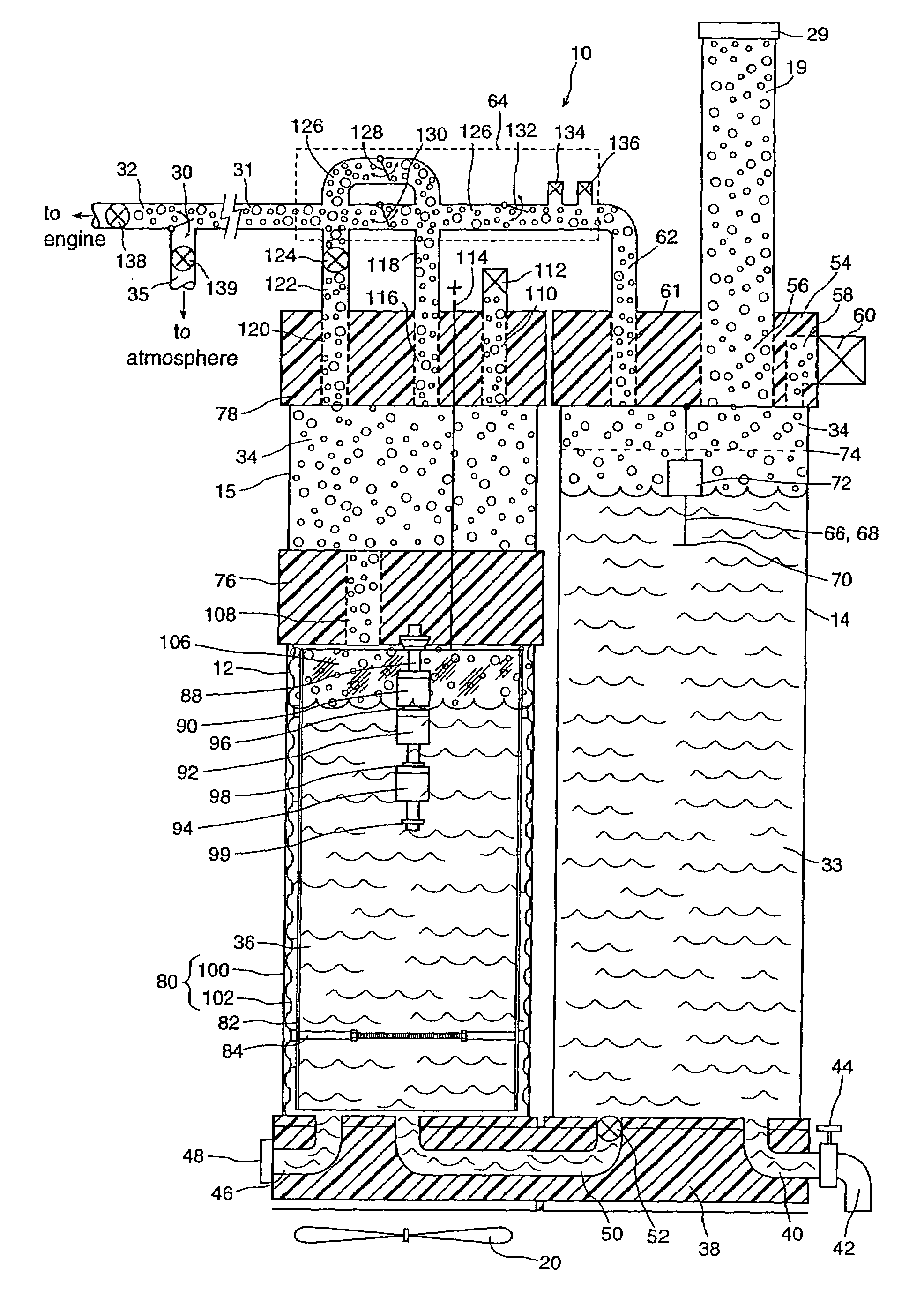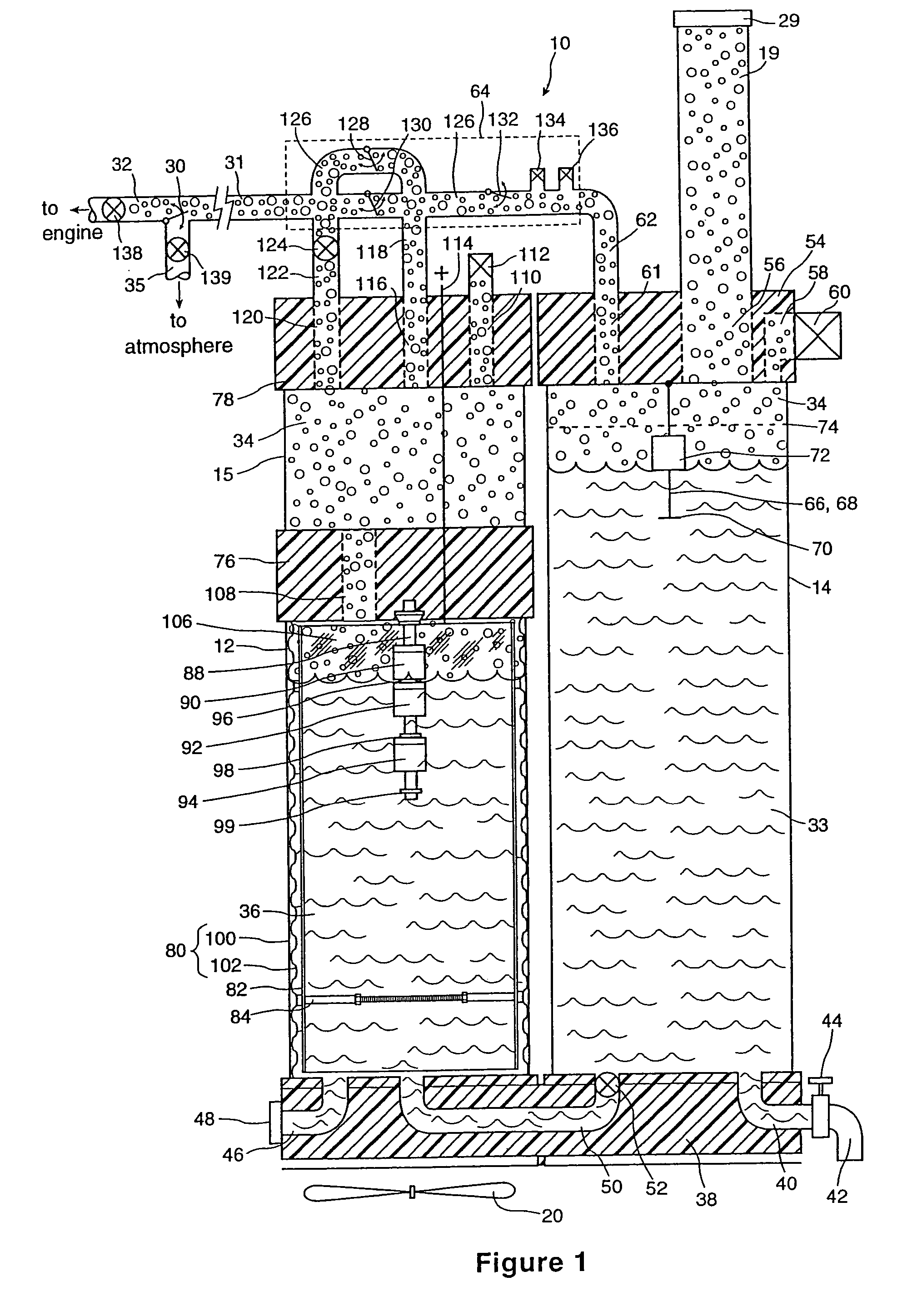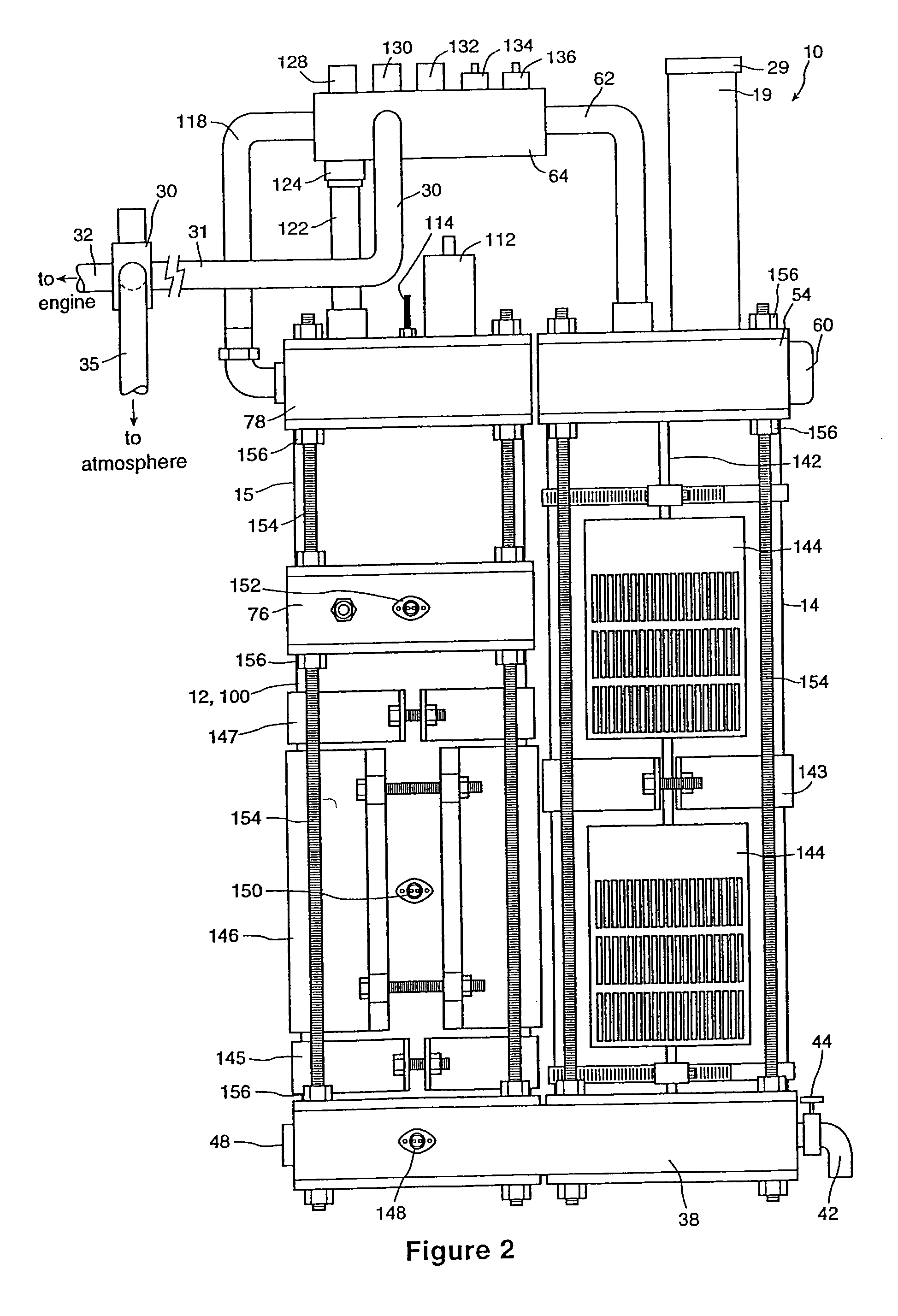Electrolysis cell and internal combustion engine kit comprising the same
a technology of electrolysis cell and internal combustion engine, which is applied in the field of electrolysis cell, can solve the problems of affecting the acceptance of an otherwise highly desirable technology, affecting causing an explosion, etc., and achieves the effects of improving the combustion efficiency of the internal combustion engine, simple operation, and minimal operator attention and maintenan
- Summary
- Abstract
- Description
- Claims
- Application Information
AI Technical Summary
Benefits of technology
Problems solved by technology
Method used
Image
Examples
Embodiment Construction
[0031]The present invention is for a system comprising an electrolysis cell and associated kit that generates and delivers a gas that acts as a fuel additive for an internal combustion engine. Electrolysis is a well known process whereby an electrical current is passed through a water-based solution. The current splits the water molecules, releasing hydrogen and oxygen gases which can be directed to the engine. The gases are injected into the engine at the air intake, where they enhance combustion of the hydrocarbon fuel used by the engine.
[0032]The invention finds particular application with motor vehicles that are powered by internal combustion engines. The invention may be used with a variety of vehicles and fuels, including conventional passenger cars having gasoline engines, commercial trucks that use diesel engines and turbochargers, as well as specialized vehicles such as forklifts or tractors that may be powered by less common fuels such as propane, methane, or natural gas. ...
PUM
| Property | Measurement | Unit |
|---|---|---|
| pressure | aaaaa | aaaaa |
| pressure | aaaaa | aaaaa |
| temperature | aaaaa | aaaaa |
Abstract
Description
Claims
Application Information
 Login to View More
Login to View More - R&D
- Intellectual Property
- Life Sciences
- Materials
- Tech Scout
- Unparalleled Data Quality
- Higher Quality Content
- 60% Fewer Hallucinations
Browse by: Latest US Patents, China's latest patents, Technical Efficacy Thesaurus, Application Domain, Technology Topic, Popular Technical Reports.
© 2025 PatSnap. All rights reserved.Legal|Privacy policy|Modern Slavery Act Transparency Statement|Sitemap|About US| Contact US: help@patsnap.com



